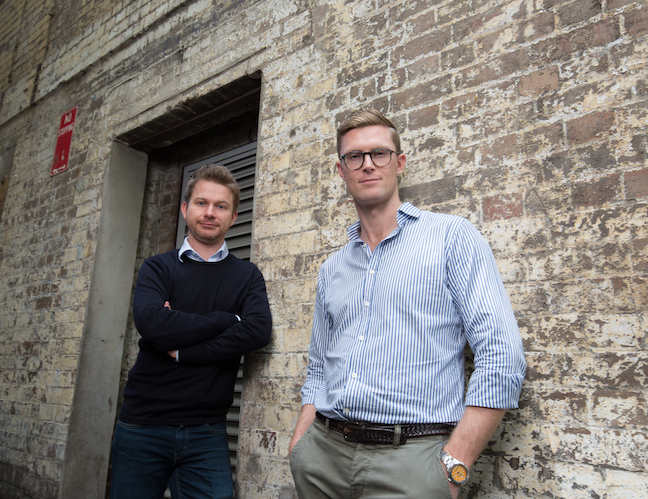How crowdfunding is taking off
Summary: After years of debate, the Federal Government has softened equity crowdfunding legislation for retail investors, who can now invest between $50 and $10,000 annually in a publicly unlisted company. In a single year, retail investors can spread $50,000 across the Australian equity crowdfunding sector.
Key take-out: Investors are unlikely to be guaranteed a return on investment, and the legislation around early stage innovation companies still seems a work in progress.
Equity crowdfunding has finally entered the investment fold for Australian retail investors, who can now capitalise early stage companies and gain a tax offset in the process.
What used to be the domain of only sophisticated investors, now the average Australian can invest between $50 and $10,000 of seed capital into a publicly unlisted company in a given year and up to $50,000 across the equity crowdfunding sector.
Eligible companies are public by way of being limited by shares, not because they're listed on a stock exchange. As well as other requirements, such as the majority of a company's directors must reside in Australia, the company and its related parties cannot have annual revenue of more than $25 million.
Equity crowdfunding is worth about $2.5 billion to the US economy and more than £200 million goes through the UK's respective sector every year. Australian crowdfunders championing the recent law change here, to let retail investors in, are optimistic it will become a bigger part of the domestic investment landscape.
The Federal Government created equity crowdfunding legislation for retail investors last March before allowing crowdfunders to apply for licences in September. Licences were approved earlier this month.
Until now, it was legal for anyone to give equity to a business they heard about through word-of-mouth, but inviting the public to invest was illegal. It took the Australian Investment and Securities Commission (ASIC) about a decade to foolproof the legislation.
Within 24 hours of the barriers coming down, a handful of businesses were already investable across seven equity crowdfunding platforms, which serve as intermediaries to broker transactions and then take a cut of between 3-8 per cent on average.
From medicinal cannabis to fintech
The ease of investing with these crowdfunders, and the enticing nature of their offers, could make this a hot investment area.
Investors can make an account and within five minutes participate in an offer if they are going in as an individual and, at most, a few days if they are investing as a trust.
In less than two weeks, digital bank Xinja, one of the first companies to come online for equity crowdfunding in Australia, has raised more than $1.1 million from around 550 investors.
Eureka Report has been given a glimpse into the deal pipeline of several of the seven equity crowdfunding platforms, which reveal many are targeting businesses in similar hotspot areas — pockets of consumer goods, fintech, and medicinal cannabis startups in the biotech sector have all been mentioned more than once. At the top end, two of the crowdfunders are expecting to launch around 30 capital raising this calendar year, hoping to raise up to $50 million from their investors.
These companies are unlikely to list a targeted return on investment or pay a dividend, but some may elect to do so. Returns are baked into the assumption an early stage high-growth company is a prime candidate for a trade sale or an IPO.
Nick Motteram (pictured below), managing director of crowdfunder OnMarket BookBuilds, has been involved in almost 90 placements since launching the bookbuilds side of the business in October 2015.

“We have seen a lot of companies coming down the pipeline but in reality it was too early for them to be listing, so that's where the crowd side of our business now comes into play,” says Motteram.
“We only want companies with a clear vision and intention of giving money back at a certain time. There will be the opportunity to invest in companies that do distribute dividends, and these companies will probably come down the pipeline in the next 6-12 months.
“Diversification is key. The probability of getting one that shoots the lights out is higher if you've got a broad range of opportunities. The minimum investment parcel is $2000 for IPOs and some people would rather test the waters in a more investor-friendly way.”
It's tax time
Investors who purchase ordinary shares in what the Tax Office terms an early stage innovation company (ESIC) could be eligible for non-refundable carry forward tax offsets.
These tax offsets are equal to 20 per cent of the amount paid to acquire the shares, up to a maximum offset of $200,000 per year. At most, a retail investor can claim $10,000 on their maximum allowable investment of $50,000.
Will Leitch, CEO and co-owner of Enable Funding, describes this as “a powerful piece of legislation”.
“It mitigates the lost generative capacity for a retail investor on the basis the asset and class of asset they are investing into is inherently risky, but by the same token, inherently more returnable,” says Leitch.
In addition, there's a modified capital gains tax treatment, where capital gains and losses are disregarded if shares are held for more than one year but less than 10.
To qualify as an ESIC, the company must satisfy early stage requirements and meet either the 100-point innovation test or principles-based innovation test.
Some of this is straightforward. The company can't be listed elsewhere, must have total expenses of $1 million or less in the prior year, and assessable income of $200,000 or less in that year.
Then things get a little blurrier. For points purposes, the second part of the process takes into consideration whether the company has gone through an accelerator program, received a grant, held an Australian patent in the last five years, and several other determinative factors.
A grey area
ESIC qualifications aren't set in stone. This could complicate matters for investors, highlights Georgia King-Siem, an R&D tax specialist at KPMG Australia.
“An R&D claim, for example, adds up to 75 points for a company if more than 50 per cent of prior year spend was on R&D, and then the company might get another 75 points for being part of an accelerator program,” explains King-Siem.
“Maybe in three years, AusIndustry or the ATO reviews the company's R&D claim and the company becomes retrospectively ineligible — so their investors have received benefits they aren't entitled to, and in theory, would have to repay the ATO.
“I imagine the ATO would say at this point in time that penalties don't apply, or interest wouldn't need to be paid on that amount. The ATO is seeing how things play out for now and wouldn't want to keep tinkering with the program as this will undoubtedly just create another problem at this stage.”
Interestingly, the CEO and co-owner of one of the larger crowdfunders, Will Leitch of Enable Funding, believes the shares would remain ESIC-compliant in the situation that King-Siem details above.
He does, however, think the three years from incorporation for ESIC status should be pushed out to four to five years to encourage a greater flow of funds into the sector and boost the commercialisation period for younger companies.
Co-founder and director of competitor Equitise, Chris Gilbert (pictured below right with fellow co-founder and director Jonny Wilkinson), admits ESIC legislation is “all a bit messy right now” because the Government is still in teething phase.

Gilbert says a friend of his, a partner at a big four accounting firm, has noted that one in 100 startups coming to his team and believing they qualify as an ESIC actually do. He thinks the rules will be changed in the next year “to become more binary”.
King-Siem of KPMG speculates that what the ATO deems to be an ‘early stage company in an accelerator program' will be one of the first things up for redefinition.
“The ATO has released guidance on accelerators and seed capital amounts, and although none of that is determinative yet, I suspect a lot of accelerators will not fit the bill,” says King-Siem.
“I think there would be a spread of companies which down the track find out they're not ESICs and there will be a few key casualties along the way, with the ATO being forgiving to some but not others who have been more opportunistic.”
Another thing to keep a check on, this time for sophisticated investors, is their $200,000 maximum tax offset. King-Siem points out it considers the investor plus their affiliates, so they could breach the cap if an associated entity has invested in the same ESIC, even if they weren't aware.
Cooling off now
Some of this could attract quite a bit of heat. Investor guarantees are fairly light on.
Retail and sophisticated investors are allocated the same ordinary shares in a standard raise. Debt owing to lenders ranks above ordinary shares when returns start being distributed.
Retail investors are protected by a five-day cooling off period. Otherwise, it's almost impossible for an investor to get their money out because there's no secondary market in Australia just yet.
A company must return all capital to its respective investors if it fails to hit the bottom-end of its capital raise target range — but some will still keep offers open once they're fully subscribed, even if they don't have a clear strategy for deploying extra capital.
“It is essentially a gamble with all the companies,” says Gilbert from Equitise, which just led the raising for Australia's first digital bank, Xinja.
“We like to think we're putting businesses forward that are less risky, have great management teams and boards, and with sophisticated and wholesale investors alongside the crowd, a greater cushion — but yes, there is a higher risk.”
















